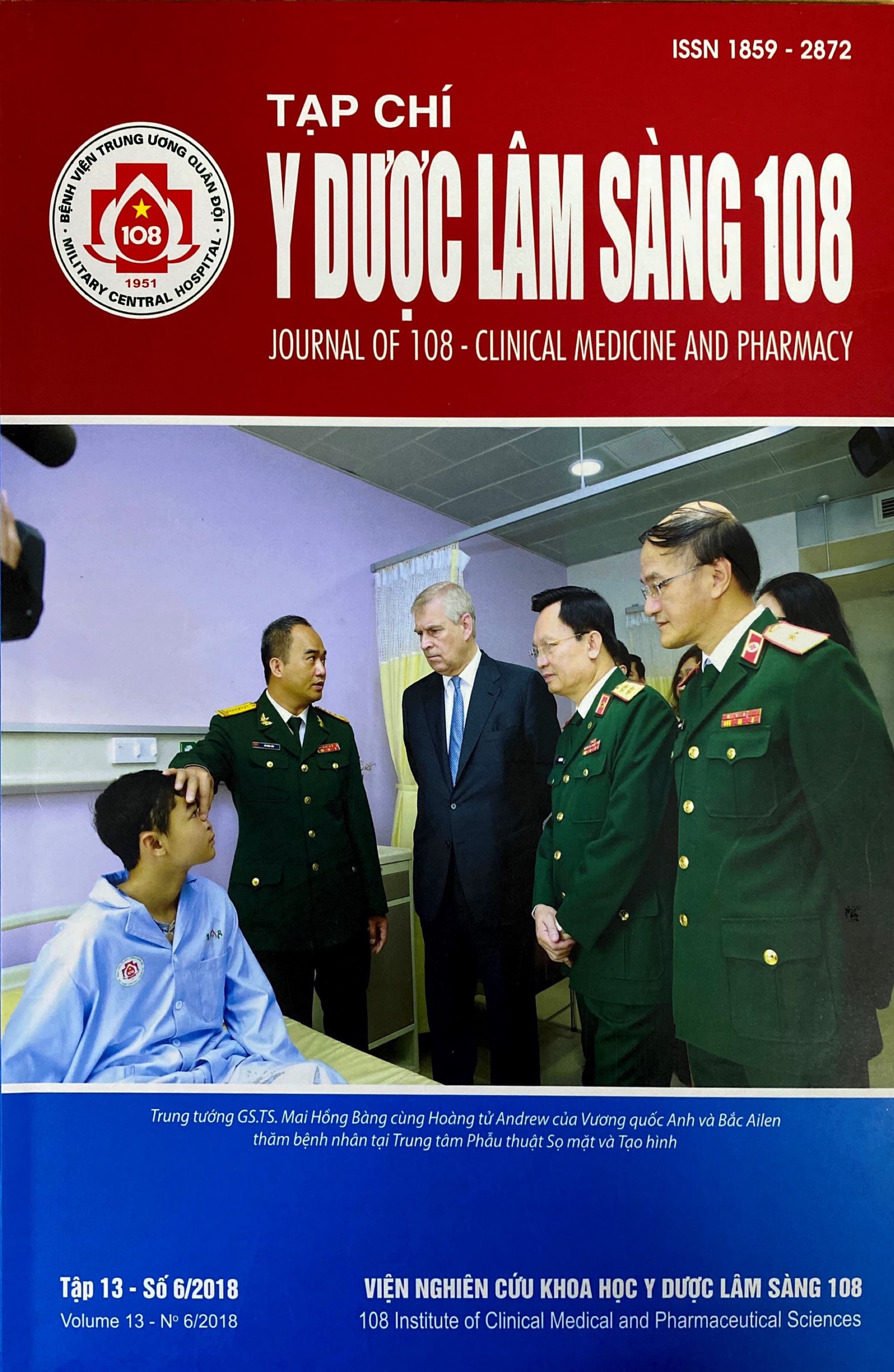Clinical characteristics and etiologies of rash and fever illnesses in children
Main Article Content
Keywords
Abstract
Objective: To describe some clinical characteristics of rash and fever illnesses (RFI) and study on common etiologies of these diseases in children. Subject and method: 840 patients admitted in the Department of Infectious Diseases, Vietnam National Children’s Hospital with symptoms of rash and fever during the period from July 2017 to June 2018. Prospective, cross-sectional descriptive study. Result: Clinical characteristics: Onset ages of RFI primarily under 5 years, boys more than girls, the highest peak in May and September. High fever and continuous high fever is prominent, duration of fever is usually < 7 days. Rash appears commonly after the onset of fever. Rash is generalized or mainly on the extrimites, rashes at the mouth or bottom usually caused by virus. Pattern of rashes: Disseminated (61.3%) and single, exanthem (72.3%), blanching rashes (39.8%) like maculopapular or papular rashes and vesicules (39.8%), enanthem rashes or vesicules mainly caused by virus. The major associated clinical symptoms are neurological and respiratory signs, 3 severe cases died or withdrew of treatment (0.4%). The percentage of duration of hospitalization < 7 days is 84.2%, RFI not associated with infection has long duration of admission. Etiologies: Mainly by virus (89.0%), unknown etiology 3.2%. RFI with confimation diagnosis by paraclinical test accounts for 47.0%. Conclusion: The major etiologies of RFI in children in this study is virus, there is a proportion of unknown etiology cases, the rate of cases confirmed by paraclinical test is low. The rashes in RFI in childrean is various and not easy to differentiate the etiologies only by the morphologies of the rashes.
Article Details
References
2. Đào Thị Minh An, Nguyễn Trí Cường (2011) Dịch tễ học vụ dịch sốt phát ban 2009 tại Lào Cai. Tạp chí Nghiên cứu khoa học, 76(5), tr. 100-105.
3. Nguyễn Thị Kim Thư, Nguyễn Văn Kính, Phạm Nhật An (2013) Đặc điểm lâm sàng và căn nguyên virus gây bệnh tay chân miệng tại miền Bắc Việt Nam từ tháng 11/2011 đến tháng 2/2012. Tạp chí Nghiên cứu y học, 84(4), tr. 21-26.
4. Ngô Thị Hiếu Minh (2010) Nghiên cứu dịch tễ, lâm sàng, cận lâm sàng bệnh tay chân miệng trẻ em ở viện Nhi Trung ương. Luận văn thạc sỹ y học.
5. Phan Hữu Nguyệt Diễm (2003) Suy gan trong sốt xuất huyết trẻ em. Y học TP Hồ Chí Minh, 7(1), tr. 132-137.
6. Bùi Vũ Huy (2011) Đặc điểm lâm sàng bệnh sởi ở trẻ em tại Bệnh viện Nhi Trung ương trong 2 năm (2009 - 2010). Tạp chí Y học Dự phòng, XXI, 3(121), tr. 45-50.
7. Vũ Thị Minh Phượng (2015) Nghiên cứu đặc điểm dịch tễ học lâm sàng bệnh sởi ở trẻ em tại Bệnh viện Nhi Trung ương. Luận văn thạc sỹ, Đại học Y Hà Nội, Hà Nội.
8. Elena Bozzola et al (2016) Varicella skin complications in childhood: A case series and a systematic review of the literature. Int. J. Mol. Sci 17: 688.
9. Nadia Ali Azfar et al (2012) Cutaneous manifestations in patients of dengue fever. Journal of Pakistan Association of Dermatologists 22(4): 320-324.
10. Moraes JC, Toscano et al (2011) Etiologies of rash and fever illnesses in Campinas. Brazil, J Infect Dis 204(2): 627-636.
 ISSN: 1859 - 2872
ISSN: 1859 - 2872
